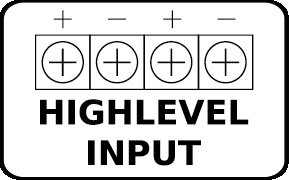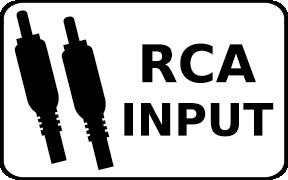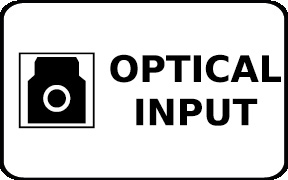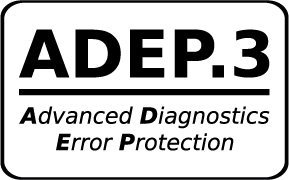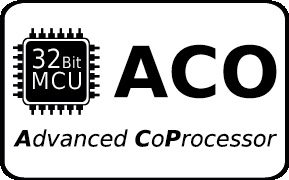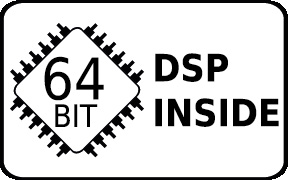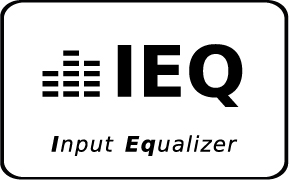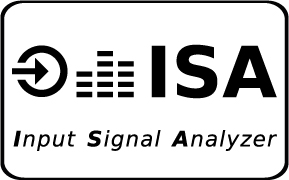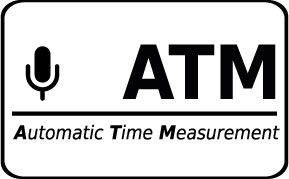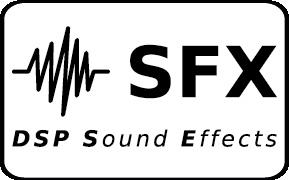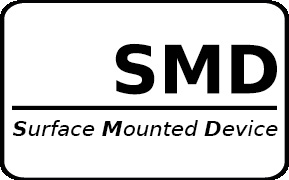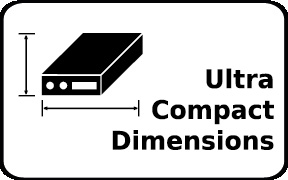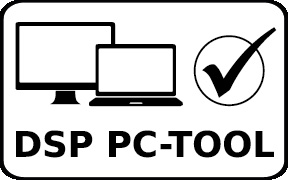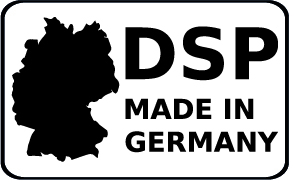Helix M Series 6 Channel Amplifier & 10 Channel Digital Signal Processor
| Special Order | Owners Manual | DSP PC Tool 5 |
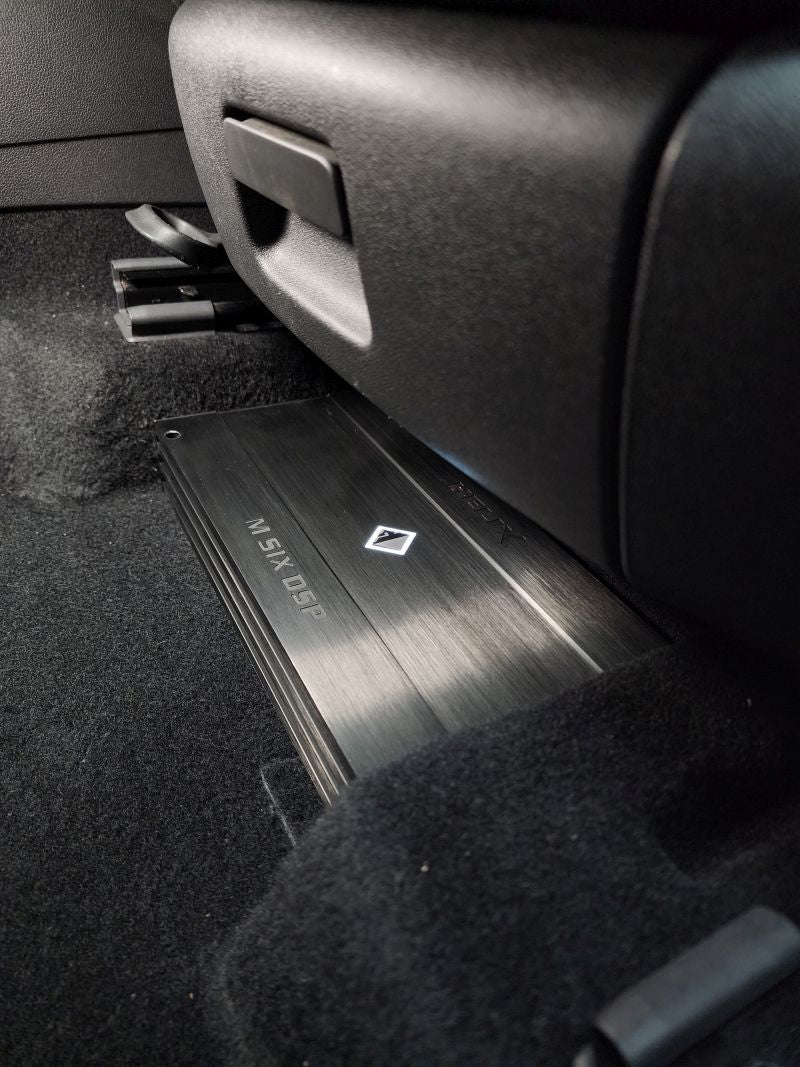
HELIX M SIX DSP
Product parameters
- Channels: 6 Channel
- Built-in DSP: Yes
- RCA Input: 6x RCA
- High-Level Input: 6x High level
- Power W RMS/ch Bridge: 200
- Power W RMS/ch | 4Ω: 100
- Power W RMS/ch | 2Ω: 135
- Other Input: Optical
- Class: D
- Max Input Sensitivity (V): 20
- Operational Voltage:
- RCA Out: 4x RCA
- Product Depth | mm: 154
- Product Width | mm: 320
-
Product Height | mm: 50
That rocks – the new M SIX DSP
The M SIX DSP is more than “just” another six-channel amplifier – rather, despite its small dimensions, you are dealing with a powerful control center that has not less than a total of ten processed DSP channels. In addition, the amplifier delivers plentiful output power with generously 100 Watts RMS per channel into both 4 Ohms and 2 Ohms load.
Finally its awesome price performance ratio in combination with the fantastic feature set will ensure bright eyes.
Tonally absolutely HELIX!
Compromises in terms of sound quality have no place in a HELIX product – and that's why the M SIX DSP is equipped with all the finesse for perfect sound. Of course, excellent and separate A/D and D/A converters are just as natural as on the DSP circuit board, which is completely manufactured in Germany, you will find only excellent, separate A/D and D/A converters as well as an extremely powerful DSP from Analog Devices. In addition, the four pre-amplifier outputs with 6 Volts output voltage provide more than enough level to drive any additional amplifier.
Maximum flexibility
Even the internal amplifier section of the M SIX DSP is extremely variable – it can either be operated in 6-channel mode or, thanks to its bridging capability, can also be configured as a 5-channel, 4-channel or even 3-channel amplifier.
But that's not all – in connection with the four pre-amplifier outputs, the sound system can be expanded in a diverse manner and upgraded to up to 10 channels.
In combination with other amplifiers of the M series (M ONE X, M ONE, M FOUR or M SIX), there are more than enough possibilities to expand the number of power channels.
This makes complex, yet affordable and, above all, space-saving multi-channel systems with enormous performance possible.
Virtual Channel Processing – that´s how signal routing works today
Many DSP channels need to be managed and configured properly – so there was no question that the M SIX DSP is also equipped with Audiotec Fischer's innovative virtual channel processing.
The adaptation to modern OE sound systems via an increasing number of inputs has a significant impact on the complexity of the signal routing inside the amplifier. Especially when several input signals are mixed together and then split again into multi-way systems, conventional routing concepts quickly reach their limits, both in terms of implementation and usability. Audiotec Fischer's new multi-stage "Virtual Channel Processing", in conjunction with the recognized user-friendly DSP PC-Tool software makes it easy to realize even highly complex system configurations. Besides, it allows to freely assign our proprietary FX sound features such as "RealCenter" or "Augmented Bass Processing".
The plus in speed – thanks to ACO
Faster is better – the particularly powerful 32 Bit ACO platform takes over all control tasks and ensures significantly more speed, especially for data communication with our DSP PC-Tool software but also for the lightning-fast switching between up to ten sound setups. But ACO offers much more – fantastic sound effects such as Augmented Bass Processing or RealCenter are implemented as well as a channel-separated Input EQ including the Input Signal Analyzer (ISA) for easy analysis and compensation of input signals of OE radios that already include an “ex works” sound setup.
Compact, cool and absolutely practical
Despite its vast range of functions and huge output power the M SIX DSP presents itself in the same classic, compact HELIX design with distinctive lines like a HELIX M SIX. Thanks to its Class D amplifier technology, it keeps a "cool head" even at full power. And thanks to features such as start-stop capability, ADEP.3 circuit and power save mode, it is also ideally equipped for the now everyday challenges of OEM integration.
Features
- Up to 130 Watts RMS max. output power per channel into 4 & 2 Ω
- Extremely powerful 64 Bit “fixed point” Audio DSP and state-of-the-art AD and DA signal converters
- ACO – Advanced 32 Bit CoProcessor platform for enhanced system and DSP features like:
- ISA (Input Signal Analyzer) and InputEQ for easy analysis and compensation of input signals
- SFX sound effects – Augmented Bass Processing, StageXpander, RealCenter & Co.
- Smart 6-channel highlevel input with ADEP.3 circuit
- Four RCA / Cinch line outputs with max. 6 Volts output voltage
- Virtual Channel Processing (VCP) allows even more flexible configuration for highly complex sound systems
- Bridgeable amplifier channels for driving powerful woofer or subwoofer
- DSP-board manufactured in Germany
Special features:
ACO – Advanced 32 Bit CoProcessor
The HELIX M SIX DSP incorporates an extraordinary powerful 32 Bit CoProcessor of the latest generation for all monitoring and communication tasks, both internally and externally. In opposite to the 8 Bit predecessor generation this MCU achieves way higher speeds with respect to setup switching and data communication with our DSP PC-Tool software. A further significant advantage is the integrated, native boot loader of the CoProcessor.
It allows software upgrades of all components of the integrated DSP in order to adjust the microcontroller-controlled ADEP.3 circuit for example to future requirements of the diagnostic system of factory radios or if the device will be extended with additional interfaces. In addition, thanks to the new flash memory, the ACO offers 10 memory locations for sound setups instead of the common two.
Smart highlevel input ADEP.3
Modern, factory-installed car radios incorporate sophisticated possibilities of diagnosing the connected speakers. In particular the latest generation of car radios are equipped with additional monitoring functions so that failure messages and loss of specific features (e.g. fader function) quite often appear if an amplifier will be hooked up – but not with the M SIX DSP.
The new ADEP.3 circuit (Advanced Diagnostics Error Protection, 3rd Generation) avoids all these problems without loading the speaker outputs of the OE radio during high volumes unnecessarily.
Power Save Mode
The Power Save Mode is incorporated in the basic setup. It allows to significantly reduce the power consumption of the amplifiers that are connected to the HELIX M SIX DSP once there’s no input signal present for more than 60 seconds. Please note that in many up-to-date cars with “CAN” or any other internal bus structures it may happen that the radio remains “invisibly” turned on for up to 45 min. even after locking and leaving the car! Once the “Power Save Mode“ is active the remote output and therefore the connected amplifiers will be turned off.
The M SIX DSP will reactivate the remote output within a second if a music signal is applied. It is possible to either modify the turn-off time of 60 sec. or completely deactivate the “Power Save Mode” via the DSP PC-Tool software.
Start-Stop capability
The switched power supply of the HELIX M SIX DSP assures a constant internal supply voltage even if the battery’s voltage drops to 6 Volts during engine crank.
DSP features
TuneEQ
TuneEQ is an extremely flexible and particularly easy-to-use function for automated frequency response correction. A single measurement per audio channel or channel pair with a suitable measurement microphone (e.g. our MTK1) is sufficient for TuneEQ to independently and precisely adjust the equalizers to the desired reference curve. TuneEQ uses the full function set of the parametric equalizer including center frequency, Q-factor and gain adjustment. And since the highly complex arithmetic operations required for this run in the background, you also save a lot of time when optimizing your sound with TuneEQ.
RealCenter
The “RealCenter” feature is an algorithm, developed by Audiotec Fischer, that emphasizes the music information which is present in both the left and right front channel to create an unique center signal. In contrast to common procedures, in which only the channels are summed up, the intensity of the center signal is also dynamically controlled by the stereophonic informational content of the left and right channel.
Sounds complicated but this effect is astonishing: That means if solely the left or right channel delivers an audio signal, the center channel will not reproduce a signal. In the case of common algorithms, the volume level of the center channel is only reduced by 6 dB (= half volume level). Audiotec Fischer’s “RealCenter” allows a unique, broadened sound staging for both driver and co-driver at the same time! Therefore, the disadvantages of a conventional center channel, such as an intrusive, small sound stage, are things of the past.
Augmented Bass Processing
Audiotec Fischer’s proprietary “Augmented Bass Processing”, consisting of the two revolutionary sound features “Dynamic Bass Enhancement” and “SubXpander”, has been especially developed to dramatically improve the bass reproduction of subwoofers.
The “Dynamic Bass Enhancement” ingeniously combines maximum deep bass and highest sound pressure – regardless of the music style or the tone controls in the head unit. Depending on the input signal, the “Dynamic Bass Enhancement” gains the lower frequency range and varies the cut-off frequency of the subsonic filter. The result is a significantly more powerful and deeper bass response at low and medium volume levels without the risk of overloading the subwoofer neither mechanically nor electrically at high volume levels. It is simply fascinating which bass performance is suddenly possible.
If you want an even lower and “darker” bass reproduction, the “SubXpander” can be additionally activated. Therefore, subharmonic tones are added to the fundamental tones in the frequency range between 50 and 100 Hz.
Technical data
| Power RMS ≤ 1% THD+N | |
| - @ 4 Ohms | 6 x 100 Watts |
| - @ 2 Ohms | 6 x 100 Watts |
| - @ 1 Ohm | - |
| - bridged @ 4 Ohms | 3 x 200 Watts |
| - bridged @ 2 Ohms | - |
| Max. output power per channel* | Up to 130 Watts RMS @ 4 / 2 Ohms |
| Amplifier technology | Class D |
| Inputs | 6 x RCA / Cinch 6 x Highlevel speaker input 1 x Optical SPDIF (12 - 96 kHz) 1 x Remote In |
| Input sensitivity | RCA / Cinch 1 - 4 Volts Highlevel 5 - 20 Volts |
| Input impedance RCA / Cinch | 22 kOhms |
| Input impedance highlevel | 9 - 33 Ohms or 20 kOhms |
| Outputs | 6 x Speaker output 4 x RCA / Cinch 2 x Remote Out |
| Output voltage RCA / Cinch | 6 Volts |
| Frequency response | 20 Hz - 22,000 Hz |
| DSP resolution | 64 Bit |
| DSP power | 295 MHz (1.2 billion MAC operations/second) |
| Sampling rate | 48 kHz |
| DSP type | Audio signal processor |
| Signal-to-noise ratio digital input | 105 / 108 dB Speaker / Line Output (A-weighted) |
| Signal-to-noise ration analog input | 102 / 105 dB Speaker / Line Output (A-weighted) |
| Distortion (THD) | < 0.03 / 0.005 % Speaker / Line Output |
| Damping factor | 100 |
| Operating voltage | 10.5 - 16 Volts (max. 5 sec.down to 6 Volts) |
| Idle current | 1950 mA |
| Max. remote output current | 500 mA |
| Operating temperature range | -40° C to +70° C |
| Fuse | 2 x 35 A Maxi-fuse (APX) |
| Power rating | DC 12 V ⎓ 80 A max. |
| Additional features | ADEP.3 circuit, Auto Remote switch, 32 Bit CoProcessor, Control Input |
| Dimensions (H x W x D) | 50 x 320 x 154 mm / 2.00 x 12.60 x 6.06” |
* In typical multi-channel applications (2- / 3-way system + rear + subwoofer)












